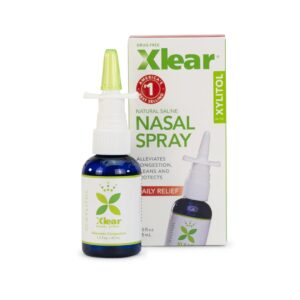In today’s competitive and fast-paced insurance industry, the right technology can be a game-changer. Commercial insurance software solutions are designed to streamline policy administration, enhance customer experience, and improve operational efficiency. However, with so many options available in the market, choosing the best software can be overwhelming.
This step-by-step guide will walk you through the key stages of evaluating and selecting a commercial insurance software solution that fits your organization’s specific needs.
Step 1: Understand Your Business Needs
Before diving into product comparisons, it’s crucial to identify your organization’s specific goals. Are you trying to speed up claims processing? Reduce underwriting errors? Improve customer self-service?
Consider asking questions such as:
- What pain points are we experiencing with our current system?
- Which features are absolutely essential for our team?
- What’s our budget for a new system?
Understanding your operational gaps and customer expectations will help you focus on commercial insurance software solutions that address your unique requirements.
Step 2: Research and Shortlist Vendors
Once your needs are clearly defined, start researching potential vendors. Look for providers with:
- Strong experience in the commercial insurance space
- Positive customer reviews
- A proven track record with similar-sized businesses
You may want to consult third-party software comparison platforms like G2, Capterra, or Gartner to evaluate vendor performance. Create a shortlist of 3–5 commercial insurance software solutions that align with your goals and budget.
Step 3: Evaluate Key Features
Not all insurance software is created equal. The best solutions go beyond basic policy management. As you assess different platforms, consider whether they offer:
- Automated Policy Checking: Ensures accuracy and reduces manual effort
- Claims Management: Efficient handling of FNOL (First Notice of Loss), documentation, and settlements
- Underwriting Tools: Integrated risk assessment and scoring
- Reporting & Analytics: Real-time dashboards and customizable reports
- Integration Capabilities: Ability to connect with CRMs, accounting tools, and core systems
- Regulatory Compliance: Built-in tools for adhering to industry regulations and data security standards
Make sure the solution can scale with your business and adapt to future growth or regulatory changes.
Step 4: Request a Demo or Free Trial
Before making any final decision, it’s essential to experience the software firsthand. Schedule a live demo or sign up for a trial if available. Involve key stakeholders—such as underwriters, claims processors, and IT staff—to test functionality and provide feedback.
Pay attention to:
- User interface and ease of use
- Navigation flow
- Customizability
- System performance (speed, bugs, responsiveness)
A hands-on trial can reveal insights that sales brochures or spec sheets simply can’t.
Step 4: Request a Demo or Free Trial
Before making any final decision, it’s essential to experience the software firsthand. Schedule a live demo or sign up for a trial if available. Involve key stakeholders—such as underwriters, claims processors, and IT staff—to test functionality and provide feedback.
Pay attention to:
- User interface and ease of use
- Navigation flow
- Customizability
- System performance (speed, bugs, responsiveness)
A hands-on trial can reveal insights that sales brochures or spec sheets simply can’t.
Step 5: Analyze Cost vs. Value
Pricing is often a decisive factor, but don’t just go for the cheapest option. Consider the total cost of ownership (TCO), which includes:
- Licensing or subscription fees
- Implementation costs
- Training and support
- Custom development (if needed)
- Long-term ROI through operational savings
Look at how each platform delivers value over time. A more expensive solution that improves efficiency and reduces errors may offer a higher return on investment.
Step 6: Assess Support and Training
Even the best software can fail if your team doesn’t know how to use it properly. Evaluate what kind of onboarding and support is offered:
- Do they provide documentation, tutorials, or a knowledge base?
- Is live customer support available via chat, email, or phone?
- Are training sessions available for staff?
Good vendor support can make the transition smoother and ensure your team quickly gets up to speed.
Step 7: Consider Compliance and Security
Handling sensitive customer and policy data requires robust security measures. Ensure the solution follows best practices in data encryption, access control, and compliance standards like:
- GDPR
- HIPAA (if applicable)
- ISO/IEC 27001
Also, verify how the software handles updates, patches, and disaster recovery. A breach or system downtime could lead to costly consequences.
Step 8: Make an Informed Decision
After you’ve evaluated features, cost, support, and compliance, bring together your team to review the findings. Revisit your original goals and match them with each vendor’s offering.
Some companies also use scorecards to objectively rank solutions based on weighted criteria. This can help remove bias and focus on functionality and fit.
Once a decision is made, negotiate terms and ensure the implementation plan is clearly laid out, with milestones and responsibilities defined.
Conclusion
Selecting the right commercial insurance software solution isn’t just a tech upgrade—it’s a strategic investment that can boost productivity, reduce risk, and improve customer satisfaction. By following these eight steps, you’ll be equipped to choose a solution that meets your current needs and supports long-term growth. Take the next step toward smarter insurance operations.
Book a Demo with Exdion Today









